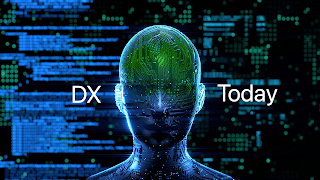Introduction
Extended reality (XR) technology refers to the combination of virtual reality (VR), augmented reality (AR), and mixed reality (MR) to create immersive and interactive experiences. While XR technology is often associated with gaming, its potential extends far beyond entertainment. In recent years, there has been a growing interest in exploring the applications of XR in various fields, including education and healthcare. This article will delve into the role of XR in these sectors, highlighting its potential to enhance learning experiences, revolutionize patient care, improve mental health therapy, aid in physical rehabilitation, and advance medical research.
The Role of XR in Education
One of the most promising applications of XR technology is in the field of education. By creating immersive and interactive learning experiences, XR has the potential to enhance student engagement and understanding. For example, virtual field trips can transport students to historical sites, natural wonders, and cultural landmarks without leaving the classroom. This allows students to explore and experience places that would otherwise be inaccessible due to logistical or financial constraints. Similarly, anatomy simulations using XR can provide students with a hands-on learning experience, allowing them to explore the human body in a way that textbooks cannot replicate.
XR in Healthcare
In the healthcare sector, XR technology has the potential to revolutionize patient care and treatment. One of the key advantages of XR in healthcare is its ability to provide realistic training and simulation experiences for medical professionals. For example, surgeons can practice complex procedures in a virtual environment before performing them on real patients, reducing the risk of medical errors and improving surgical outcomes. Additionally, XR can be used to create personalized treatment plans for patients by visualizing their conditions and demonstrating the effects of different interventions. This can help patients better understand their conditions and make informed decisions about their healthcare.
XR in Mental Health
XR technology is also being used in innovative ways to improve mental health therapy. One example is exposure therapy, which is commonly used to treat phobias and post-traumatic stress disorder (PTSD). XR can create virtual environments that simulate the situations or triggers that cause anxiety or distress in patients. By gradually exposing patients to these virtual scenarios, therapists can help them confront and overcome their fears in a controlled and safe environment. This approach has been shown to be effective in reducing anxiety and improving treatment outcomes. XR can also be used to create calming and immersive experiences for relaxation and stress reduction, providing a therapeutic escape for individuals dealing with mental health issues.
XR in Physical Therapy
In the field of physical therapy, XR technology has shown great potential in improving rehabilitation outcomes. For example, stroke patients often struggle with regaining mobility and coordination. XR can be used to create virtual reality games that encourage patients to engage in repetitive and targeted movements, making therapy more enjoyable and motivating. These virtual reality games can also provide real-time feedback on patients' performance, allowing therapists to track progress and adjust treatment plans accordingly. Additionally, XR can be used to simulate real-life scenarios that patients may encounter during their recovery, such as navigating stairs or getting in and out of a car, helping them regain confidence and independence.
XR in Medical Research
XR technology is also playing a significant role in advancing medical research. By creating virtual environments and simulations, researchers can study complex biological processes and test hypotheses in a controlled and repeatable manner. For example, virtual reality can be used to study the brain and its neural networks, allowing researchers to visualize and manipulate data in ways that were previously not possible. This can lead to new insights and discoveries in fields such as neuroscience and neurology. Additionally, XR can be used to simulate clinical trials, allowing researchers to test the effectiveness of new drugs or treatments without involving human subjects. This can help accelerate the research process and reduce costs.
Challenges and Limitations of XR in Education and Healthcare
While XR technology holds great promise, there are several challenges and limitations that need to be addressed. One of the main challenges is the technical limitations of XR devices, such as limited field of view, resolution, and processing power. These limitations can affect the quality and realism of the XR experience, making it less immersive and engaging. Additionally, the cost of XR devices and software can be a barrier to widespread adoption, especially in resource-constrained settings such as schools and healthcare facilities. Furthermore, there are ethical concerns surrounding the use of XR technology, such as privacy and safety. For example, XR devices may collect and store personal data, raising concerns about data security and privacy.
Future of XR in Education and Healthcare
Despite the challenges, the future of XR in education and healthcare looks promising. As technology continues to advance, XR devices are expected to become more affordable, portable, and powerful. This will enable wider adoption and integration of XR technology in classrooms and healthcare settings. Furthermore, ongoing research and development in XR software and applications will lead to more sophisticated and realistic experiences. In education, XR has the potential to transform the way students learn by providing immersive and interactive experiences that cater to different learning styles. In healthcare, XR has the potential to improve patient outcomes by providing personalized and effective treatment options.
Conclusion
In conclusion, extended reality (XR) technology has the potential to revolutionize education and healthcare. By creating immersive and interactive experiences, XR can enhance learning experiences, revolutionize patient care, improve mental health therapy, aid in physical rehabilitation, and advance medical research. While there are challenges and limitations that need to be addressed, the future of XR in education and healthcare looks promising. It is important to continue exploring the possibilities of XR technology and harness its potential to transform the way we learn and receive healthcare.

